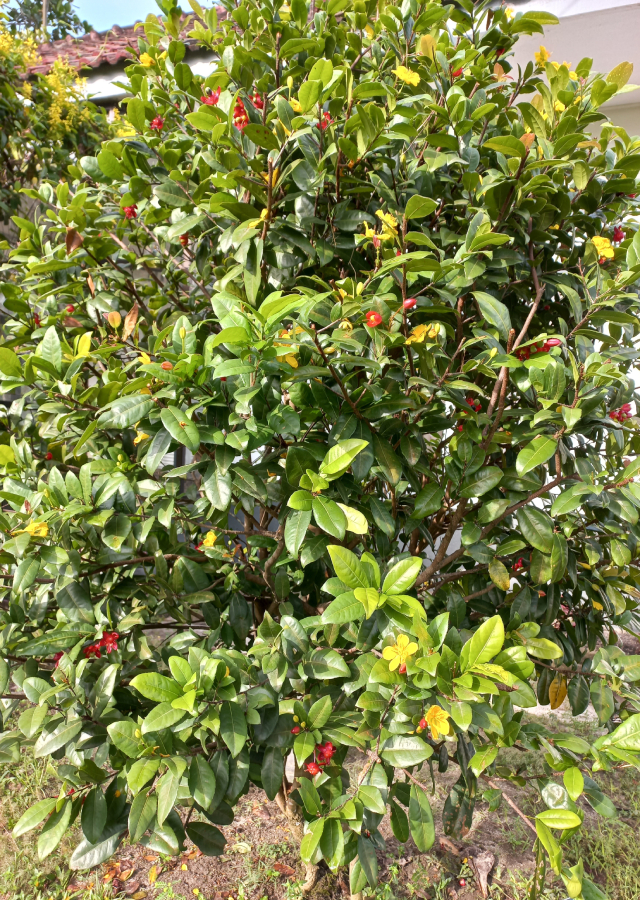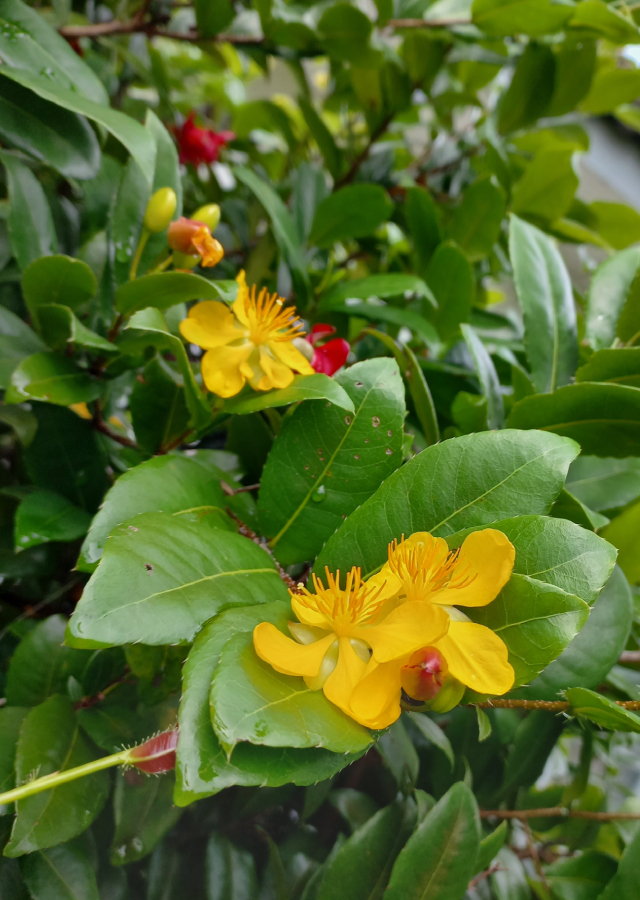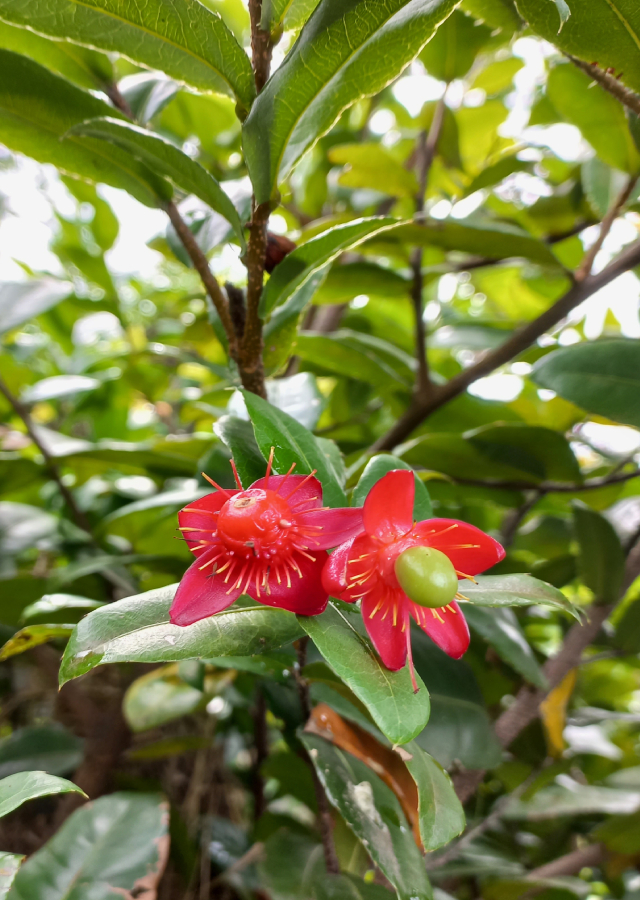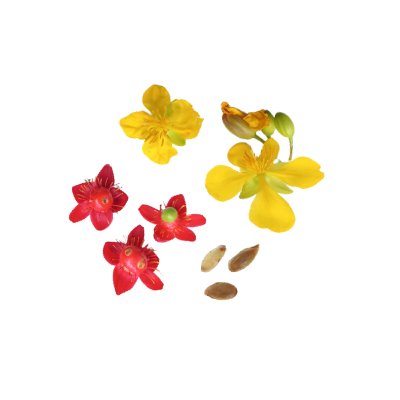Mickey Mouse Plant
Ochna serrulata (Hochst.) Walp.
Ochnaceae
Location in our garden
Principal



Synonym
Diporidium serrulatum Hochst.
Habitus
Shrubs. Ochna serrulata is a perennial shrub that grows up to 1.5 meters high.
Part Used
Bark
Fruit
Roots
Growing Requirements
Full Sunshine
Need Shade
Habitat
Forest
Terrestrial
Overview
Mickey mouse comes from South Africa. The mickey mouse plant has been cultivated widely outside of South Africa as an ornamental and living hedge. The mickey mouse plant flower is also used as a lucky flower for the new year in Vietnam. Because, this plant sometimes only flowers once a year. This plant is also believed to have medicinal benefits that are used as traditional medicine, such as the Zulu people of South Africa use a decoction of the roots to treat children suffering from bone disease or gangrenous proctitis
Vernacular Names
Bird's eye bush, Bird's eye plant, Carnival bush, Carnival ochna, Mickey mouse bush, Small-leaved plane (Engl.), Fynblaarrooihout (Afrikanns), Kiiltomikinpensas (Finnish), Umbomvane (Zulu).
Agroecology
Prefers semi shade of the understorey of forests where it forms a dense monoculture that prevents regeneration of native species. It tolerates wet soil but also withstands droughts.
Morphology
- Root - deep tap root.
- Stems - round, erect, dark brown, monopodial branching.
- Leaves - narrow and elliptic (1-5 cm long, 0.5-1 cm wide). Leaf margin is lined with fine teeth.
- Flowers - sweetly scented, bright yellow flowers (2 cm wide) are composed of 5 round, widely spread petals and numerous yellow stamens.
- Fruits - pea-like fruits are initially green, turning to black at maturity. Each flower produces 1-5 fruits which are attached to the calyx (outermost layer of a flower). The calyx becomes bright red and swollen after the petals drop.
- Seeds - black.
Cultivation
Reproduce by seed and propagate plants by stem cuttings of medium maturity.
Chemical Constituents
4,4′,7-tri-O-methylisocampylospermone A (1), 4′′′-de-O- methylafzelone A (2) and serrulone A (3), along with irisolone 4′-methyl ether (4), 3',4'-dimethoxy- 6,7-methylenedioxyisoflavone (5), iriskumaonin 3′-methyl ether (6), lophirone L (7), a mixture of biflavanone 1 and campylospermone A, syringaresinol (8), and 16α,17-dihydroxy-ent-kauran-19-oic acid (9).
Traditional Medicinal Uses
Bark or root use for wound treatment; also, applied for pain relief. Zulu people of South Africa use the decoction of roots to treat children suffering from bone diseases or gangrenous proctitis.
Part Used
Reference Sources
- Flora Fauna Web. 2021. Ochna serrulata Walp. https://www.nparks.gov.sg/florafaunaweb/flora/6/6/6680. 4-11-2021.
- Stuartxchange. 2019. Philipphine Medicinal Plants: Mickey mouse bush. http://www.stuartxchange.org/MickeyMouseBush. 4-11-2021.
- New Zealand Plant Conservation Network. 2021. Ochna serrulata. https://www.nzpcn.org.nz/flora/species/ochna-serrulata/. 4-11-2021.



